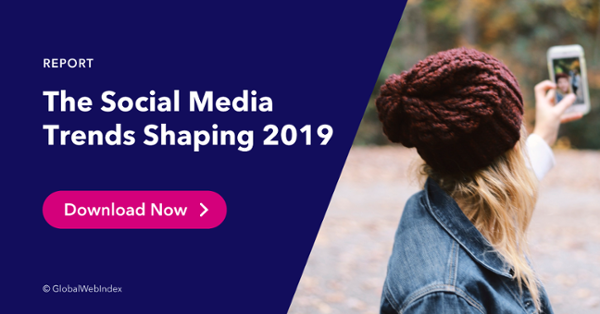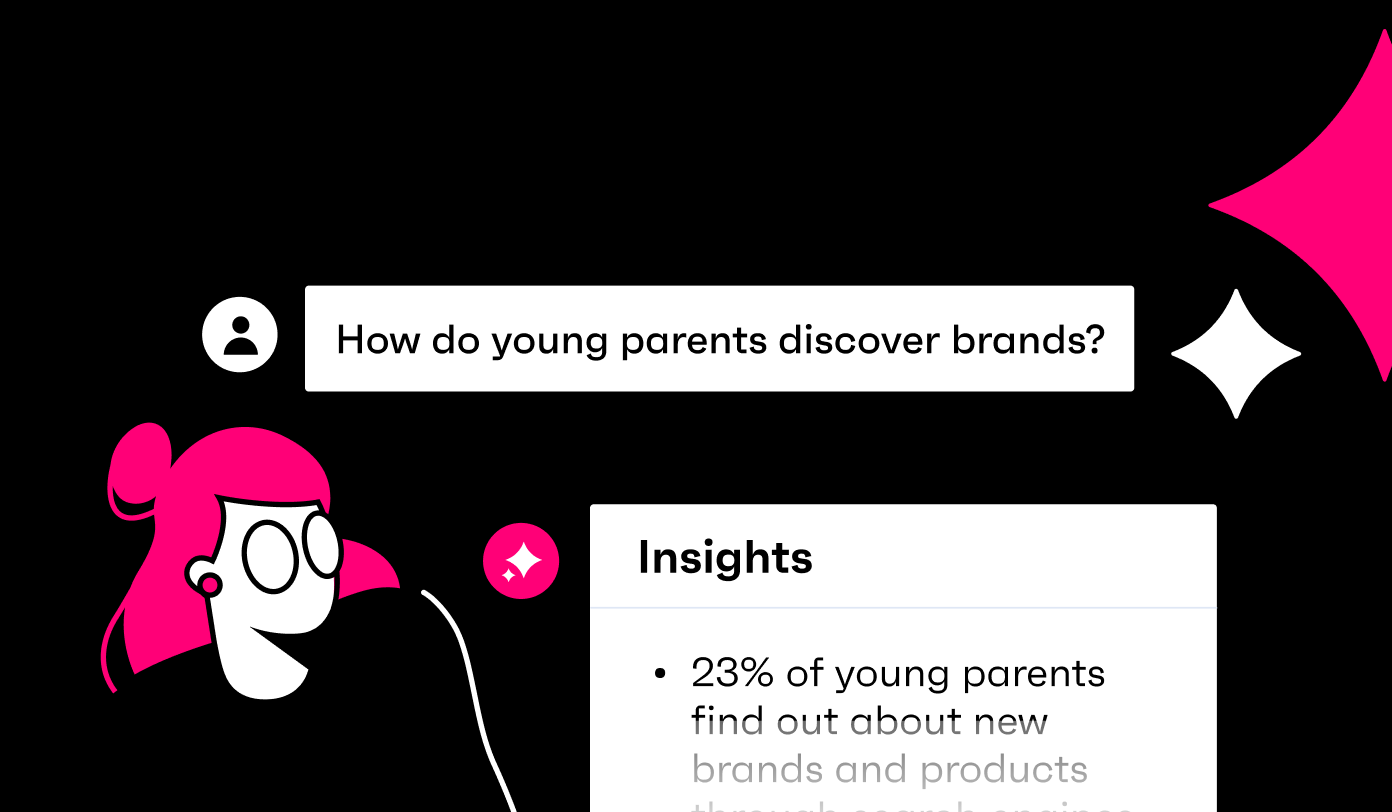The role that social media plays in the lives of its users has evolved.
Entertainment now plays a key role in motivating digital consumers to engage with social media, ranking as the fourth most important reason (36%).
The opportunities for social engagement at all times of the day and in various locations, have facilitated the evolution of social platforms into entertainment hubs.
It’s no longer about “social” activities in the purest sense, but more purposeful activities, particularly around which content we choose to consume.

This helps to explain why motivations like news consumption, finding entertaining content, researching products, and watching sports have seen increases in the past few years.
In fact, watching or following sports events as a main motivation for going on social media has seen a 47% increase since Q4 2016.
22% of consumers now seek out sports content on social media.
And, sports leagues are now turning to more digital offerings to lure younger fans, amidst concerns that TV audience numbers for sporting events are falling.
While TV isn’t dead, particularly for live sport, the fact that the Super Bowl audience shrank this year, and the Premier League’s rights values were down, has prompted the sports industry to broaden its horizons.
This blog takes a look at some of the biggest trends in sports consumption on social media.
Here are five things to know.
1. Live video is a gateway for sports content.
Sports fans are craving more tailored, accessible content.
The challenge for sports broadcasters and sponsors now is to offer an immersive digital experience as well as a compelling reason to watch sport on TV, as they look to maximize audience reach and monetization.
One potential route for a more engaging online experience is live video, allowing brands to connect with consumers in new and exciting ways in the realms of entertainment.
The sports industry is already harnessing the power of digital and social media and there’s still plenty of room for growth.
Globally, 22% of internet users say that following sports events is one of their main reasons for using social networks, climbing to 39% among live social video viewers.
Peter Hutton, Director of Global Live Sports Partnerships and Programming at Facebook, appeared at last October’s Leaders Sport Business Summit to discuss what the sports industry can leverage from the platform going forward.
First, the sports rights holders can experiment with new forms of production as Facebook plans to utilize its Oculus Rift VR platform to enhance and redefine the spectator experience by enabling fans to feel like “they are in the crowd at the game”.
The recent unveiling of the Rift S, a higher resolution VR headset, signals that developments in this space continue.
Second,
Social media provides new avenues to keep fans engaged by building a community, which will ultimately be followed by monetization.
Facebook’s partnership with the Professional Darts Corporation is among examples that show how instrumental sports streaming on social media can be in growing a global footprint.
According to the agreement, Facebook screens tournaments to the previously untapped markets of U.S., South America and India, helping PDC reach new heights.
2. Sports content thrives on Facebook and YouTube.
In the last month, 28% of live social video viewers – those who have used the live feature on Facebook, Instagram, Snapchat or Twitter – have commented about a sports event on Facebook and 17% have done so on Twitter.
It’s clear that Facebook and YouTube already own the commentary that happens around sports. The access to the broader conversation around the world that these platforms provide appeals to sports fans.
As audiences become accustomed to platforms like Netflix and Amazon Video, long-form viewing on social media and other online channels has increased, contributing to an enriched live sports viewing experience.
Last year, the MLB signed an exclusive broadcast agreement with Facebook to produce 26 live games online for $30 million.
The initiative was a success, with games receiving 123 million views on Facebook, leading MLB to pursue a similar agreement for the 2019 season.
What’s more, Facebook signed a deal with La Liga to live stream games in India for free for the next three seasons.
This partnership has helped the club to expand its reach and visibility, reaching a new audience in a country of 1.3 billion people. It’s clear that sports live streaming provides new revenue streams to both social networks, as well as sports leagues and sponsors.
YouTube is also a key platform in this space.
UK pay-TV giant BT sport is expected to stream the UEFA Champions League final on YouTube for a fourth straight season, in the first all-English final since 2008.
3 in 10 YouTubers say they’ve watched a sports video or clip on the platform in the past month.
With YouTube boasting the highest membership and visitation rates outside China among those using social media for sports content, it will be looking to be the dominant player in social sports consumption.
3. Exclusivity is key.
But, social channels like Instagram and Twitter also present spaces where fan communities can be cultivated and maintained.
This prime advertising space can also be used to present a humanized version of athletes and round-the-clock access to the sport.
Instagram stories and livestreams let athletes and teams give their followers what appears to be exclusive, ‘behind-the-scenes style’ insights on training sessions, and offers the opportunity to host impromptu Q&As that bring fans closer to their idols.
Often these sessions are brand-sponsored.
The North Face clothing brand is a prime example of how social sponsorship deals with athletes have helped promote its own products, while also supporting the work of the sports star.
Prior to the release of the Oscar-winning ‘Free Solo‘ documentary, The North Face Instagram page featured exclusive stories and content promoting the film and extreme rock climber Alex Honnold.
Exclusive content or services are important to those going on social media for sports content.
29% of social sport users say they want their favorite brands to improve their knowledge and skills, and they’re 50% more likely than the average internet user to say they would promote their favorite brand online for getting insider knowledge about the brand/product.
And exclusive content is particularly important to younger consumers; 16-24 sports fans are 30% more likely than the average sports fan to say exclusive content or services is a purchase driver.

These sports fans want to see content that they’ve never seen before, which gives them a new view into their favorite club, or a game they’ve just watched on TV.
They want to be able to get behind-the-scenes access and watch their favorite players in natural, relaxed environments.
This could be why so many sports teams and leagues have joined the TikTok bandwagon. The NBA, NHL and MLB have all launched league accounts, while the NFLPA reached a deal with the platform in January to allow TikTok users to implement 3D augmented reality stickers of its players.
Bayern Munich, which timed its account launch ahead of a rivalry match against Borussia Dortmund, garnered almost 135,000 likes on a behind-the-scenes walkthrough video on gameday at the Allianz Arena.
Their content revolves around producing four to five weekly clips, mainly consisting of players performing viral dance moves and routines, and quirky goal celebrations.
The NBA, meanwhile, has been on the platform since the Music.ly days and built much of its audience through posts of quirky in-game moments.
The league has found large success in dropping unseen highlights with accompanying music.
While the NBA already utilizes Twitter and Facebook as its home for game-related action and developments, brands are now conscious of the fact they need to stay nimble on what content fits the right platform.
4. Brands are capitalizing on the rise of women’s sports.
There are two powerful demographic lures of TikTok.
The first is audience age. Those who have used TikTok outside of China in the last month are 1.6x more likely to fall into the 16-24 age bracket, with three-quarters of our respondents in the 16-34 bracket.
It’s a goldmine for sports leagues eager to connect to Gen Z.
But the second lure for brands is gender.
In three out of the five regions, females TikTok users outnumber male users. This finding is especially true in Europe, where there is a 60:40 split in favor of females
The bulk of the NBA’s 4.3 million followers on TikTok are young females, and Bayern Munich’s 86,000 followers are roughly an even split of men and women.
On top of this, the ratio of males and females who say they use social media for sports news and content is also becoming more balanced over time.
This could be due to female sports gaining more attention and becoming more mainstream on traditional media.

And brands are taking heed of this slow shift towards gender balance in sports consumption.
Nike, for instance, put women’s sport at the heart of its ‘Dream Crazier’ campaign early this year. Starring and narrated by Serena Williams, the ad is an open call for women in sports to fight back against gender bias and negative stereotyping.
Purpose-led marketing, when done correctly, can receive widespread engagement and praise.
Nowadays brands need to be proactive about associating themselves with causes, in order to break through the noise and elevate their image among young consumers especially.
This is an important opportunity for brands and stakeholders to make their position clear on the subject. Corporate social responsibility extends across all industries and has emerged as a crucial factor that companies can’t ignore.
Adidas has embodied this concept, having pledged to pay women the same bonus payouts as men for winning the Women’s World Cup. This kind of strong brand messaging resonates well with the female World Cup sports fans in particular.
With more and more females playing and watching sports, as well as more heading to social to get their sports fix, creative content around female sport could receive widespread and positive engagement.
5. The Middle East and Africa love consuming sports content.
Consumers in the Middle East and Africa are among the most active users of social media platforms.
The region’s large youth population and high mobile penetration rate have made it the ideal market for companies like Instagram and Snapchat.
But it’s Facebook that remains the most dominant platform for the Middle East, with 79% of internet users here saying they’d visited the platform in the past month.
And this is a region that loves consuming sports content. Across four of our markets in MEA (including Saudi Arabia, UAE, South Africa and Egypt) 26-33% say that they use social media to follow sports news and events.
Additionally, many annual sports events and competitions have the highest engagement in this region, both on linear TV and online. For example, 19% of respondents in MEA say they watch the UEFA Champions League online, compared to 11% in Latin America and Europe – regions that tend to be most affiliated with a love of soccer.
And MEA’s favorite club to support? Liverpool.
Internet users in the Middle East and Africa are 2.3x more likely than average to support the Champions League finalists, with 46% saying they have some level of support or interest for the club. Compare this to Europe, where it’s only 16%, and you can see the level of engagement present in MEA.
Liverpool stars like Mohammed Salah (Egypt) and Sadio Mané have become bona fide phenomenons, helping to raise Liverpool’s international profile while also becoming ambassadors for the Muslim community.
A study by Alrababa et al. (2019) on whether the exposure of celebrities from stigmatised groups can reduce prejudice, found that hate crimes in the Merseyside county (home to Liverpool F.C.) declined by 19% when Mohammed Salah joined Liverpool.
On top of that, the number of anti-Muslim tweets posted by Liverpool fans was cut in half relative to fans of other top-flight English soccer clubs.
Brands are starting to take heed of the Middle East and Africa. At its first TwitterFronts event for the MEA region, Twitter unveiled over 16 premium video content collaborations across sports, entertainment and news.
These partnerships include exclusive shows with Bein Sports, Formula One and Goal DAZN.
La Liga has also had an aggressive social media strategy in MEA, including using Telegram to access the football-mad under-30s among Iran’s 70 million-strong population.
These partnerships indicate that there is still enormous growth for sports leagues, teams and sponsors to engage with new audiences and markets.
All in all, the relationship between the sports industry and social media is still in its infancy, but with new technologies pushing the boundaries of what sport is, now is the time to seize opportunities as they arise.





.webp?width=495&height=317&name=pink_thumb_graphs%20(1).webp)
.webp?width=495&height=317&name=pink_thumb_letter%20(2).webp)
